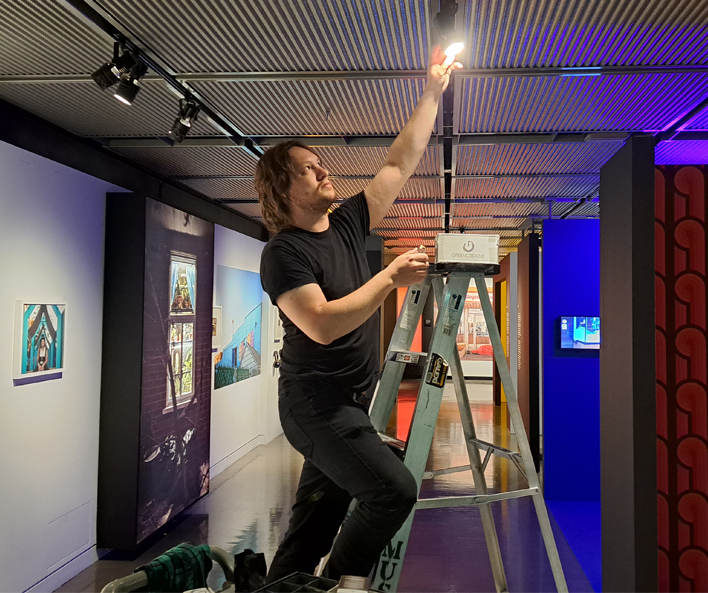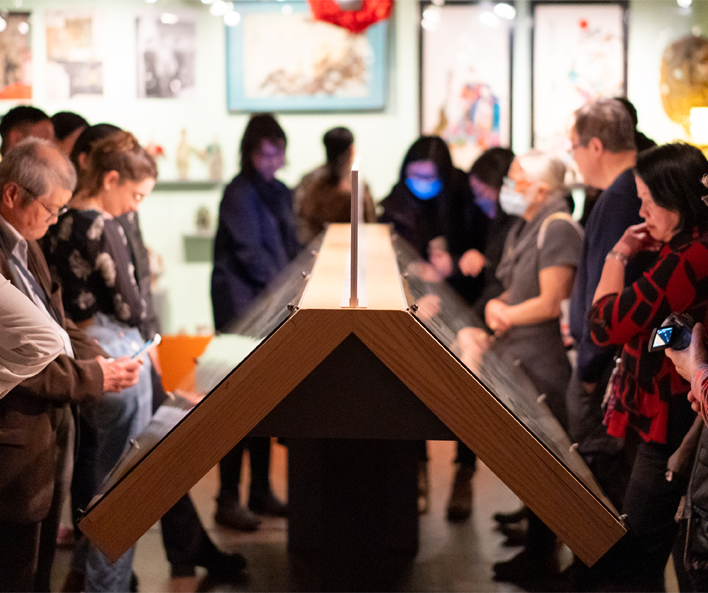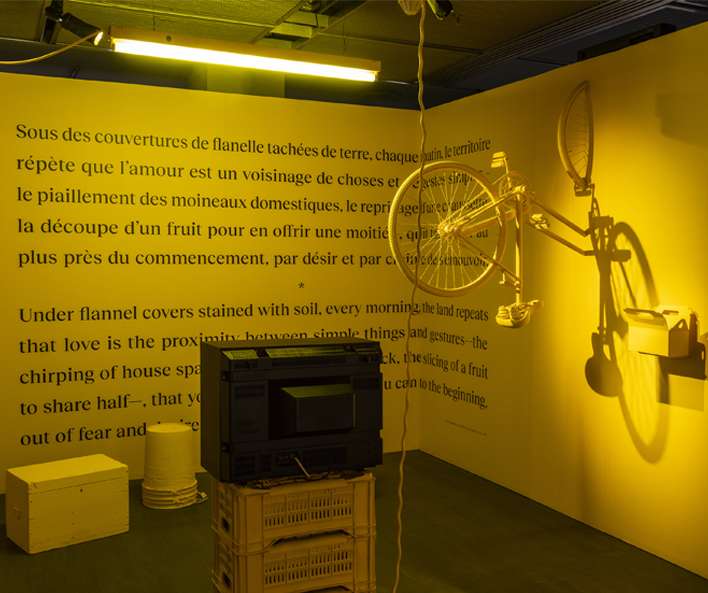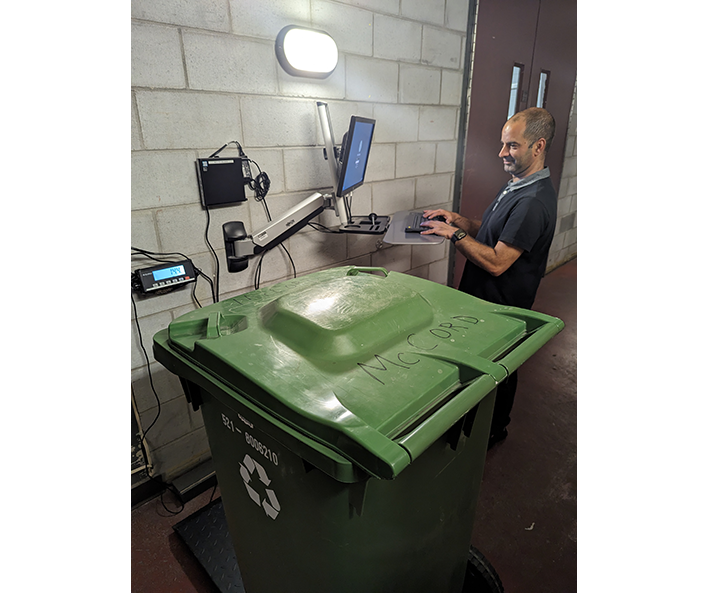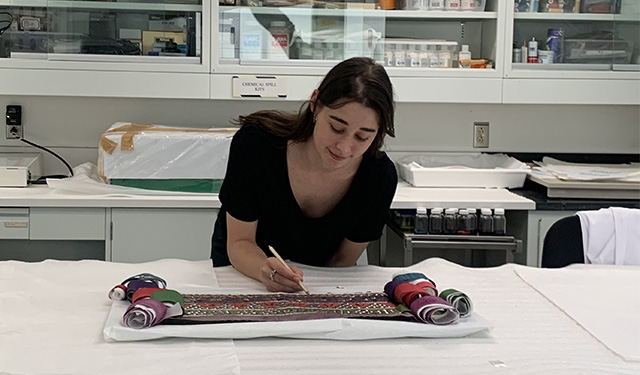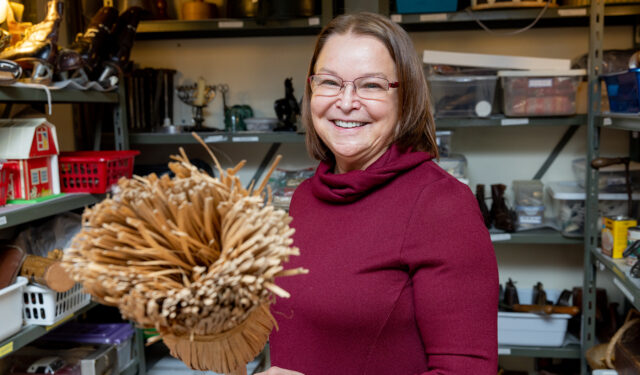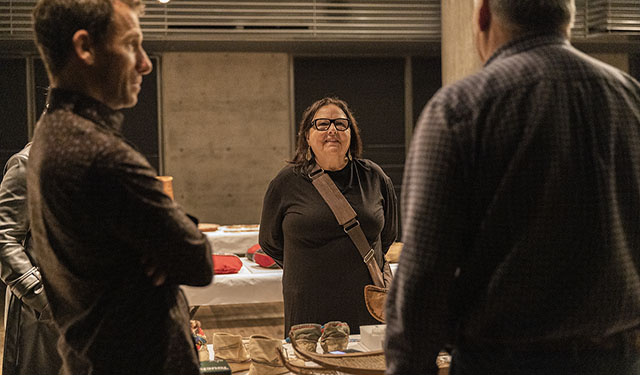A pivotal year for sustainable development
It is time to take stock. Learn about the Museum's efforts to adopt more sustainable practices.
November 22, 2023
It takes honesty and transparency to adopt a proactive approach to making our institutional practices more sustainable. We are lucky to be part of an open-minded workplace where colleagues are, on the whole, personally familiar with waste reduction, inclusion, cultural heritage protection and the harmful effects of climate change.
Although we all agree on the urgency of changing our habits, the culture sector has to cope with a chronic lack of resources, complex infrastructure with ageing facilities, and a dearth of professional expertise in sustainable development.
That being said, we have no intention of lowering our expectations when it comes to assessing our performance over the past year. We would like to share our reflections on what we have done thus far, what we plan to do in the future, and the relevance of disclosing this information publicly.
| See the Museum’s sustainable development policy |
We view the past year—the first in our five-year action plan—as a benchmark. Some of the initiatives presented below will be used to guide our efforts, enabling us to track our progress and set clear, inspiring objectives for our teams.
Responsible procurement and local sourcing
One of the main projects undertaken was developing and implementing a responsible procurement policy. Since the Museum does not have a central purchasing department, the challenge was to adapt decision-making tools to make them relevant for all departments. An evaluation grid and inventory of certifications were drawn up to identify the best possible choice of products and suppliers. The team would like to thank its interns from the UQAM master’s program in environmental science, Rafaelle Dion-Truax and Marc Adélise, for their invaluable contributions to this important project.
Seeing our galleries in a whole new light!
The Exhibitions team has pursued its commitment to eco-design by reusing materials and constructing fewer new elements, analyzing product life cycles, and finding new recycling partners. In addition, the Museum has saved energy by equipping almost 94% of its total gallery space with LED lighting and decreasing the number of hours that lighting is used in these spaces.
Calculating greenhouse gas (GHG) emissions
The Museum had the opportunity to participate in a group training program offered jointly by the Sustainable Events Council (Conseil québécois des événements écoresponsables) and the Société des musées du Québec (SMQ). This program explained how to use Creative Green Tools, which focus on calculating the carbon footprint of organizations in the arts and culture sector. We carried out two pilot collection projects to assess our ability to identify relevant data and analyze some of our practices.
Tools in hand, we enthusiastically surveyed guests on the mode of transportation they used to travel to the opening of the exhibition Swallowing Mountains by artist in residence Karen Tam, and calculated all of the waste generated by the exhibition Hochelaga – Evolving Montreal by artist Joannie Lafrenière.
After analyzing one event and one exhibition, we identified the primary sources of GHG emissions for these targeted activities. By combining our findings with regular data gathering, the Museum will soon be able to set GHG reduction objectives.
The Sustainable Development Committee: More dynamic than ever!
To measure the Sustainable Development Committee’s progress and ensure its objectives are being met, the Museum modified its composition and workings, mandating it to follow up on tasks and actions. The Committee is now made up of a representative from each department to guarantee consistency across the board. It has championed a number of initiatives, like a guide to digital sobriety, suggestions for how visitors can go green on their next visit, a guide to organizing a sustainable event, the creation of a sustainable communication strategy, and upgrades to improve energy efficiency.
Training and pooling resources
To help the Museum’s teams implement the sustainable development policy, we offered various types of support. In-person training sessions, webinars, guides, tool box and information capsules were made available throughout the year. Furthermore, several opportunities for pooling expertise with peers enabled the team to share the initiatives and approaches adopted, notably at the SMQ conference in September 2022 as part of a panel discussion entitled “Governance and sustainable strategies,” as well as at more informal meetings with various participants from academia and the cultural sector.
What's next?
We are happy to say that we have completed all the targeted actions for year one of our five-year plan. In fact, thanks to the many partnerships developed, we even exceeded some of our goals. Of course, since it was the first year, the focus was more on rolling out projects than presenting quantitative findings. However, we did successfully mobilize our team, our partners and our visitors.
In the coming year, we will be continuing our efforts in responsible procurement and carbon calculations. We will also take a closer look at issues related to transportation, waste management, and the recognition of colleagues’ work, in addition to surveying our stakeholders about our progress. At the same time, we will establish mechanisms for monitoring best practices in our sector of activity, including documentation, training and communications. This should enable us to identify objectives that are more specific.
In conclusion, our greatest achievements of the past year relied heavily on networking and collaborating with academic and professional partners. This cooperative approach is very much in keeping with the notion of sustainable practices and we will continue to build on it.

